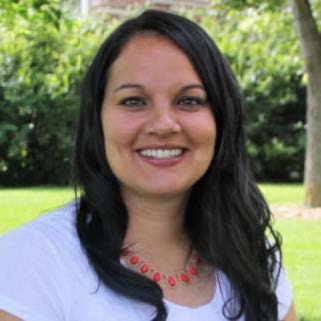
Originally created in 1998 to bolster student retention at Colorado State University, Key Communities are learning communities for first-year, second-year and continuing students that are designed to provide a nurturing and inclusive environment through community building, mentoring and experiential learning. The Key Communities, which celebrated their 25th anniversary this academic year, are a recognition of the University’s responsibility to establish frameworks that affirm the identities and experiences of its students.
To scale up their capacity for serving students — growing from an original cohort of 90 to a current group of 530 students — Key became part of CSU’s Student Success Initiatives in 2007. Director of Key Communities Jessica Klingsmith offered insight into the vast undertaking of Key.
What are the overall goals of Key Communities, and what metrics are used to measure progress toward those goals?
Klingsmith: As a component of CSU’s Student Success Initiatives, the goals of Key align with the overall goals of Student Success: to create equitable educational environments resulting in increased graduation rates and the elimination of opportunity gaps, to increase CSU’s six-year graduation rate to 80% , and to eliminate the gap between six-year graduation rates of minority and non-minority students, adjusted for entering background characteristics.
With many of our students identifying as a student of color and/or first-generation to college, our goal is to create nurturing, inclusive environments that welcome, value and affirm the diverse identities of our students. Through creating these types of environments, ultimately our goal is that Key students have higher persistence and graduation rates compared to first-time, full-time non-Key students.
The Office of Institutional Research, Planning & Effectiveness compiles reports on many of Key’s student data points, including but not limited to persistence rates, GPA, credit completion and academic probation, through which Key Communities’ impacts are assessed.
In what ways do Key Communities promote conversations about diversity, equity and inclusion?
Klingsmith: Key Community students enroll in a first-year seminar course taught in small cohorts. Most of our seminars center diversity, equity and inclusion as the primary course content. A few examples of seminar topics include Diversity, Inclusion and You; Multifaith & Belief Engagement; Latinx Leadership; and Psychology of Diversity.
Through student mentor engagement, our staff connect Key students to the impactful diversity, equity and inclusion events offered through the Cultural and Resource Centers, and many of the Key students are engaged with the Cultural and Resource Centers.
What factors contribute to Key Communities being one of the most diverse communities on campus?
Klingsmith: Key Communities alumni and high school partners are among the strongest advocates for the Key Communities. Through their advocacy, they share with others the reputation that Key has built around being a community that welcomes, values and affirms the diverse identities of students. In addition, we have created equitable recruitment practices that center students who hold diverse identities.
The Learning Communities 5-Year Summary Report conducted by Institutional Research, Planning and Effectiveness reports that racially minoritized, first-generation, and Pell Grant students are “highly overrepresented” in Key Communities relative to CSU overall, and growth in these groups within Key outpaced that of CSU overall over the five-year study period.
What does the partnership between Key Communities and Community for Excellence entail, and how does it support the missions of both initiatives?
Klingsmith: Roughly 40% of Key Community participants are also Community for Excellence students. Within Key, we prioritize C4E populations through our recruitment and outreach efforts. Priority access to the Key Communities is also written into memorandums of understanding between some C4E partners and CSU.
Based on a 2017 report compiled by IRP&E, students who participate in both Key and C4E have higher persistence rates for second fall, third fall and fourth fall semesters at CSU.